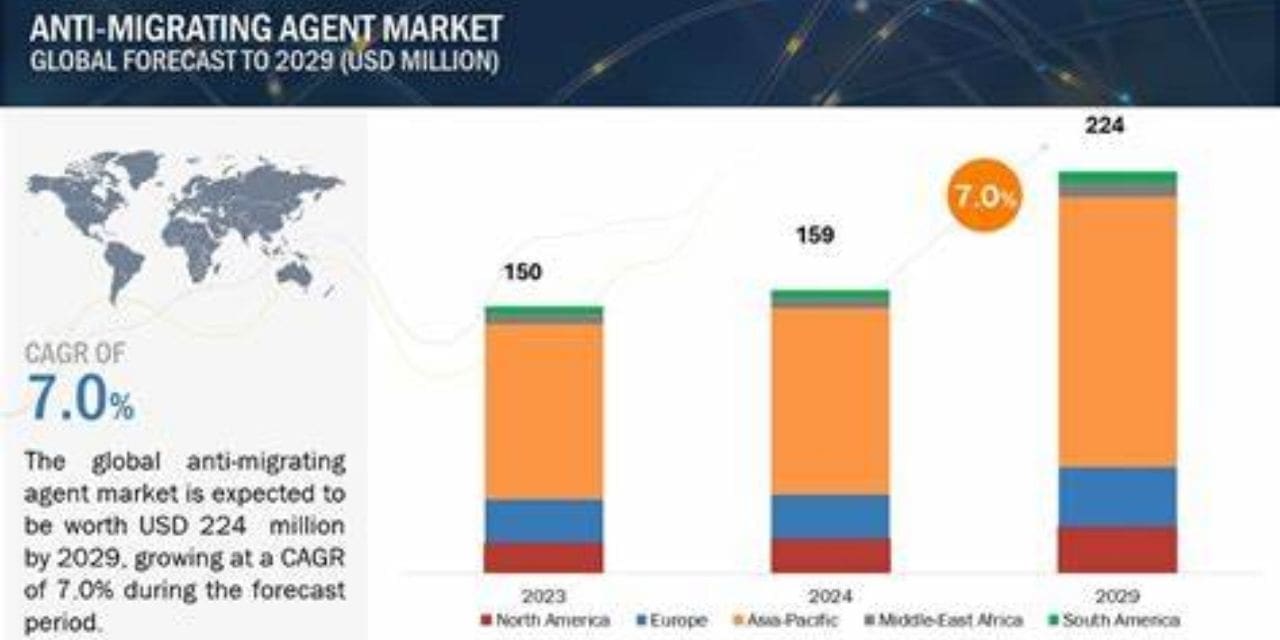The report “Anti-Migrating Agent Market by Type (Non-ionic, Anionic, Cationic, Amphoteric), Grades (Technical, Food, Pharmaceutical), Application, Chemistry (Organic, Inorganic), End-Use Industry (Textile, Plastics, Paper), and Region – Global Forecast to 2029″, size is projected to reach USD 224 million by 2029 from USD 159 million in 2024, at a CAGR of 7.0% during the forecast period. The major drivers for the anti-migrating market are burgeoning demand in the textile industry, the rise in digital printing applications, and the increased focus on high-quality, durable products. The textile industry relies heavily on anti-migrating agents to ensure color fastness and prevent dye migration, which is critical for maintaining the quality and appeal of textiles. As textile markets expand globally, the need for effective anti-migrating agent continues to grow.
Browse
- 157 Market data Tables
- 79 Figures
- 240 Pages and in-depth TOC on “Anti-Migrating Agent Market – Global Forecast to 2029”
Some of the prominent key players are:
- SNF (Germany)
- Rudolf GmbH (Indonesia)
- Zschimmer & Schwarz Holding GmbH & Co KG (Germany)
- Sarex Chemicals (India)
- Archroma (Switzerland))
Driver: Growing demand for high-quality textiles in the anti-migrating agent market to drive the market growth
The surge in consumer demand for top-tier textiles, propelled by escalating disposable incomes and dynamic shifts in fashion preferences, is a pivotal force fueling the anti-migrating agent market. In this burgeoning landscape, discerning consumers prioritize fabrics and apparel renowned for their exceptional colorfastness and longevity. Consequently, textile manufacturers are increasingly turning to anti-migrating agent to safeguard these coveted qualities.

